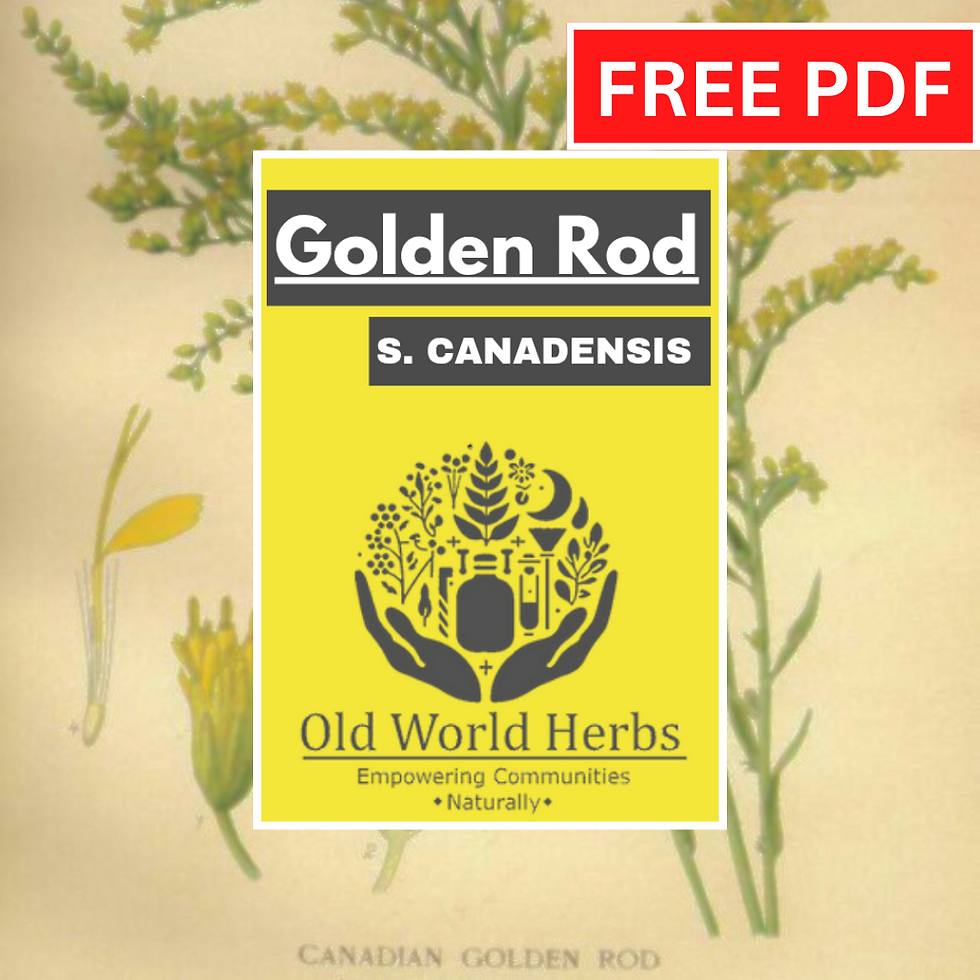Hand these zines out at places like libraries, food banks and soup kitchen to help further our mission.
Used throughout history, Goldenrod (Solidago canadensis) has been a key plant for both settlers and Indigenous peoples alike. This resilient and vibrant herb earned its place in traditional medicine cabinets and wildcrafting baskets across North America for its remarkable versatility and healing properties.
Goldenrod was commonly used by Native American tribes such as the Cherokee, Iroquois, and Delaware for treating a wide range of ailments—from wounds and fevers to digestive upset and respiratory issues. European settlers quickly adopted the herb, incorporating it into teas, poultices, and tinctures. It even gained the nickname "woundwort" due to its effectiveness in treating cuts and inflammation.
Scientifically, Solidago canadensis is a member of the Asteraceae family and is rich in flavonoids, saponins, and essential oils—compounds that contribute to its anti-inflammatory, astringent, and diuretic actions. Its bright yellow flowers contain quercetin, a powerful antioxidant and antihistamine, which supports the immune system and reduces allergic responses. Additionally, the plant is known to help flush out the urinary tract, making it a common herbal ally for kidney and bladder health.
This free digital zine explores how to identify, harvest, and safely use Goldenrod in your own life. Whether you’re a budding herbalist, a seasoned forager, or just plant-curious, you’ll find practical and ancestral knowledge within its pages.
Download yours today and reconnect with one of the most generous wild herbs in North America.
top of page

Help Thy Neighbor
$0.00Price

bottom of page
